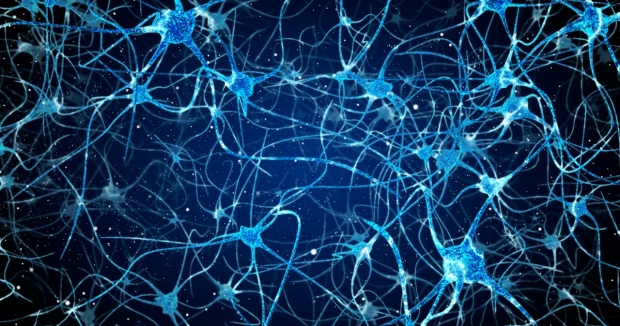Brain’s navigation center calls on mental state as well as physical environment, Stanford researchers find
Nicholas Weiler
Can you think of what you had for breakfast? Calling up this memory will almost certainly make you think of not only where you were at the time — perhaps sitting at your kitchen table — but also what was on your mind: reviewing your goals for the day, managing family chaos or perusing the latest news.
New research by scientists at the Wu Tsai Neurosciences Institute suggests that the earliest stages of memory formation may incorporate awareness of our surroundings as well as the internal context — such as emotions or thoughts — that mark those memories.
The findings, published Aug. 6 in Neuron, could require an update to the common view in neuroscience that navigation was the original purpose of memory. According to this view, creatures evolved good spatial memories so they could retrace their steps to valuable resources like food, water or mates while avoiding sites where they encountered threats. The idea was that more subjective aspects of memory were layered on top of this foundation.
“Remembering our internal states seems fundamental to how we differentiate between the many different experiences that might take place in exactly the same location,” said the study’s lead author, Isabel Low, a doctoral candidate in neurosciences. “How do I distinguish the memory of eating breakfast in my kitchen this morning from all the other times I’ve been in that space this week, or even over many years?”
The brain's GPS
In their new study, Low and colleagues in the laboratory of Lisa Giocomo, PhD, an associate professor of neurobiology and Wu Tsai Neuro member, focused on an area of the brain called the medial entorhinal cortex, which has long been considered the brain’s GPS. Prior research has shown that entorhinal cortex neurons represent an animal’s location and orientation within a particular environment, creating a sort of “map” of the space through the activity of hundreds of neurons. As an animal moves between familiar locations, the neurons switch between these neuronal maps, potentially helping other parts of the brain’s memory circuits define distinct episodes in a continual stream of sensory experience.

Lisa Giocomo
However, recent studies in Giocomo’s lab suggested that individual entorhinal cortex neurons might be responding to things like an animal’s goals and motivations, not just changes in its environment.
“The traditional view was that, like a GPS device in your car, the entorhinal cortex could get you to your favorite restaurant, but it didn’t care if you were going because you’re hungry, meeting a friend or using it as a landmark on your way to somewhere else. That richer context was thought to be added later in the memory centers of the hippocampus,” said Giocomo. “But we had started to wonder if something else was going on.”
Until recently, technological challenges in studying the activity of more than five to 10 neurons at a time have hindered scientists’ ability to clearly define how the hundreds of neurons that make up medial entorhinal cortex neurons maps switch between different contexts. To get a better view, Low and colleagues applied recently developed brain recording technologies to monitor the activity of hundreds of entorhinal cortex neurons simultaneously in mice navigating through a virtual environment by running on a wheel.
The researchers wanted to see how the entorhinal cortex’s spatial maps behaved in the absence of any environmental changes, so they designed the animal’s virtual space to be an infinite linear track with features that repeated about every 4 meters. To the team’s surprise, this expanded view quickly revealed that, despite the unchanging environment, the entorhinal cortex neurons were generating two distinct maps and synchronously switching between them every 30 minutes or so.
'I was shocked'
“I was expecting to see tiny subtle changes that would need sophisticated statistics to reveal, but once we scaled up to see what hundreds of neurons were doing, it was obvious, even by eye, that they were alternating between two distinct maps of same place, and all in perfect coordination,” said Low. “I was shocked.”
Low and colleagues suspect that these spontaneous remapping events likely reflect a change in how the animal is experiencing or processing its environment. But this finding posed a problem: If medial entorhinal cortex maps are supposed to maintain a stable representation of an animal’s environment to share with the other memory systems, like the hippocampus, how is an animal supposed to maintain a stable sense of place if its GPS is continually switching between maps?

Isabel Low
To address this question, Low worked with Alex Williams, PhD, a Wu Tsai Neurosciences Institute Interdisciplinary Postdoctoral Scholar in the Department of Statistics. His analysis revealed that even when the activity of hundreds of entorhinal cortex neurons underwent a fundamental switch — perhaps because of a change in mental state — the brain activity still reflected the same underlying spatial information about the animal’s whereabouts.
As a result, the researchers demonstrated, the parts of the brain’s memory circuits that care about a stable representation of space could ignore the distinctions between the alternating maps, while other parts of the circuit could extract the internally generated contextual information — such as goals or emotions — the maps represent. In this way, the brain may be able to efficiently file similar experiences separately in memory.
“This is a new understanding of how an animal can maintain representations of the world that can be dynamically changing but stable at the same time,” said Low.
The researchers are now seeking to understand what sorts of internal mental processes trigger these seemingly spontaneous remapping events. The researchers noted that entorhinal cortex remapping often occurred when the animals reduced their running speed, but the meaning of this correlation remains unclear: “It could be that the animals were slowing down because they were recalibrating their mental maps, and not the other way around,” Low said.
“This opens up many new questions about how internal states like thirst, attention or stress are contributing to these remapping events in the entorhinal cortex, and how they affect an animal’s memory and ability to navigate,” Giocomo said.
Other Stanford contributors to the study are Malcolm Campbell, PhD, a former graduate student in the Wu Tsai Neurosciences Institute, and Scott Linderman, PhD, an assistant professor of statistics and member of the Wu Tsai Neurosciences Institute.
The research was funded by the Wu Tsai Neurosciences Institute, the National Institutes of Health (grants 1F32MH122998-01, U19NS113201 and R01NS11311), the National Science Foundation, the Simons Foundation, the Office of Naval Research, the Vallee Foundation and the James S. McDonnell Foundation.
